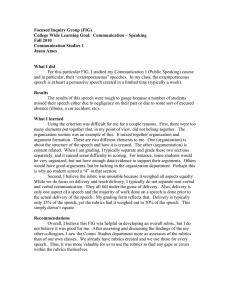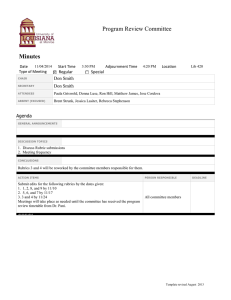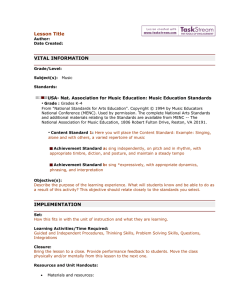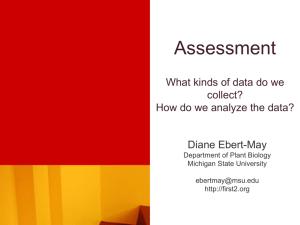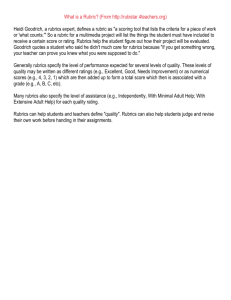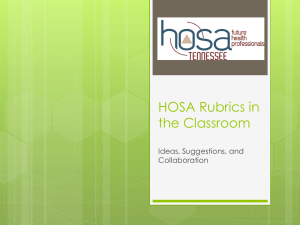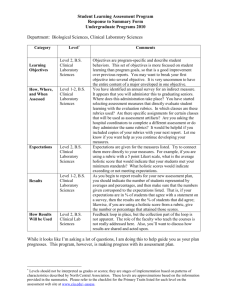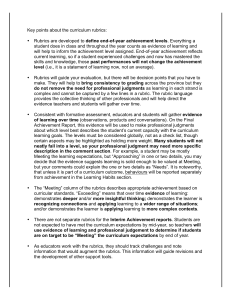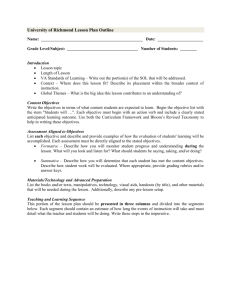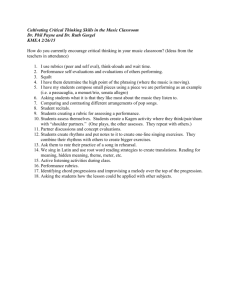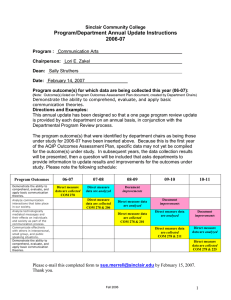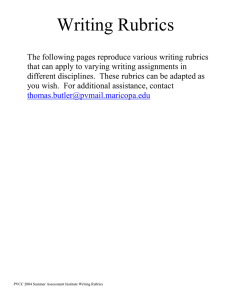Online and Computer-based Assessment Tools
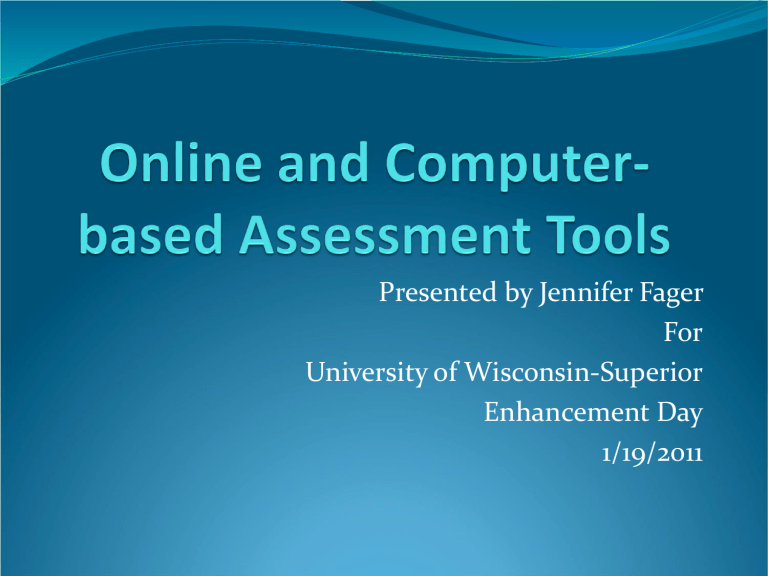
Presented by Jennifer Fager
For
University of Wisconsin-Superior
Enhancement Day
1/19/2011
Advice for Assessing Student Learning in an
Online Environment
Multiple Choice and Short Answer Questions
Not always the best technique in either online or ground formats
Lend themselves to cheating more so in online
Questions, regardless of ground or online, must be written well
The “test” has been overused and relied upon unless the instructor is an expert in writing good test items
Advice continued
Use multiple forms of assessment
Has corroborating evidence of student achievement
More personalized assessments reduce the likelihood of plagiarism
“Term paper” vs. application paper using personal examples
General research paper vs. select topics focus
Use examples more “authentic” in format
Consider problems of the field
Engage in “conversation’s” online
Advice continued
Security options
Lockdown browser
Student can’t go to another website during the test
NOTE: Most students now have multiple devices so they can go to their IPhones, blackberries, laptops, IPads, etc. to research the “answers”
Advice Continued
Set test time limits
Even if the student gets help, time restricts the amount
Can punish the slower readers/processors
What do you want in terms of meaningful, thoughtful responses
Advice continued
Assume any online test is, by definition, open book
And perhaps open notes, and open neighbors
Don’t try to make it otherwise
Advice continued
Quiz/test software products are available
Can generate multiple versions of tests
Each student can receive a “different” test
http://www.fau.edu/irm/instructional/respondus.php
Have students explain their answers
25% have to explain ‘A’ answers, 25% ‘B’ answers, etc.
Advise continued
Other security ideas
“thumb” identification
Webcams
Face-to-face testing at a testing center
Online Assessment Resources
Commercial Assessment Data Management Tools –
E.g. TracDat, WeaveOnline, Chalk & Wire
Curriculum Design Tools
E.g. WIDS – link outcomes to Performance Assessment Tasks
Survey Instruments
Survey Monkey
Zoomerang
Portfolios
Course Management Systems Quiz and Analysis Functions
Blackboard and others
Resources Continued
Google Docs
Jing
Reflective Instruments
Leadership
Personality Style
Teamwork
Merlot (has content template builder)
Clickers
AdobeConnect with polling features
Lock-down Browsers for online testing
Fundamental Questions
What evidence do you have that students achieve your stated learning outcomes?
How have you articulated these outcomes to students and adjunct faculty?
In what ways do you analyze and use evidence of student learning?
Assessment Process
The same process is used for online programs and courses as for ground (traditional):
Needs Assessment
Needs of the profession
Needs of the learners
Articulate your expectations
Measure achievement of expectations
Collect and analyze data
Use evidence to improve learning
Assess effectiveness of improvement
Measure Online Learning
Direct Methods
Mostly the same as ground
Can use any student work products that can be saved in an electronic form
Some challenges exist with lab work, oral performances, etc.
Indirect Methods
Again, same as ground
Survey response rates are notoriously low
Advantages of Online
Assessment
Artifact collection can be automated through the course management software
Can work for ground as well
Assignments, rubrics can be standardized and mapped to specific competencies/outcomes
Again, can work for ground as well
New Opportunities with Online
Assess quality of discussions, group work
Particularly effective with asynchronous
Assess individual learning in more depth
Student advising can be more robust
Use of standardized rubrics can result in greater consistency in grading
Particularly effective when combined with periodic instructor norming and use of anchor samples
Discussion & Group Work
Faculty can isolate and organize contributions to a threaded discussion and give feedback on how to improve
Can archive individual contributions and group discussions
Formative and summative
Course, program, and institutional levels
Create a record of instructor effectiveness
Useful for annual review, tenure
Individual Student Learning
Individual learning/achievements can be tracked across the educational experience
E-format allows for wide dissemination of collected data
Current software packages provide various levels of data collection & dissemination
Rubrics
Clear articulation of expectations that are linked to specific course & program outcomes
A means through which correspondence of online & ground rigor can be ensured (alignment)
Increases consistency in grading across sections, courses, programs, even colleges
Holistic vs. Analytic
Example of a Successful Online
Assessment Strategy
Develop course/program maps which articulate learning outcomes and link them to specific courses and course assignments
Collect and archive artifacts through the course management software
Post rubrics through course management software for student and faculty use
Ensure Validity, Reliability
Tracking inter-rater reliability helps achieve consistency in grading
Post rubrics, anchor samples for 24/7 faculty use
Full-time/core faculty should formulate competencies, achievement standards & interpret results
Sample Assessments
Review the Video Gaming Assignment included at the end of this packet.
Determine how this assignment could be adapted for online learning
General Education Outcomes
Example
The ability and inclination to think and make connections across academic disciplines
How would you assess this outcome in ground or online courses?
Websites and Resources
http://fod.msu.edu/oir/TeachWithTech/onlinecourses.asp
http://www.uwstout.edu/soe/profdev/assess.cfm
http://www.fgcu.edu/onlinedesign/index.html
http://www.pvc.maricopa.edu/~lsche/resources/onlin eteaching .htm
http://sloanconsortium.org/
Questions and Concerns
What issues have you encountered when assessing online learning?
What are your concerns regarding the use of online assessment techniques?
What policies and/or procedures need to be in place to reduce or alleviate these concerns?
Questions Still Burning?
What else do you need to know?
The Bottom Line?
Assessment in online learning can be the same as assessment on ground—artifacts and tools can be the same even if the medium is different!
